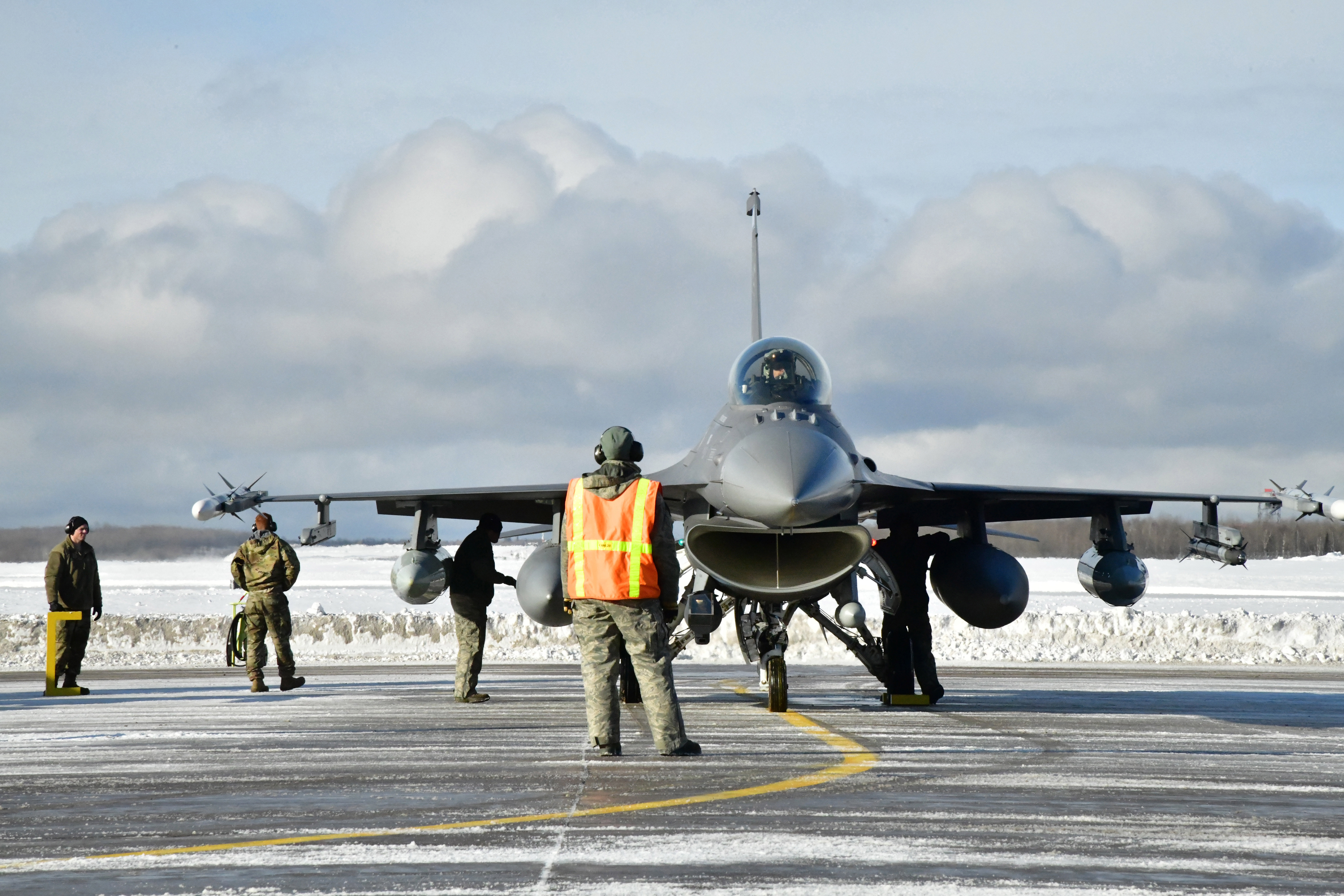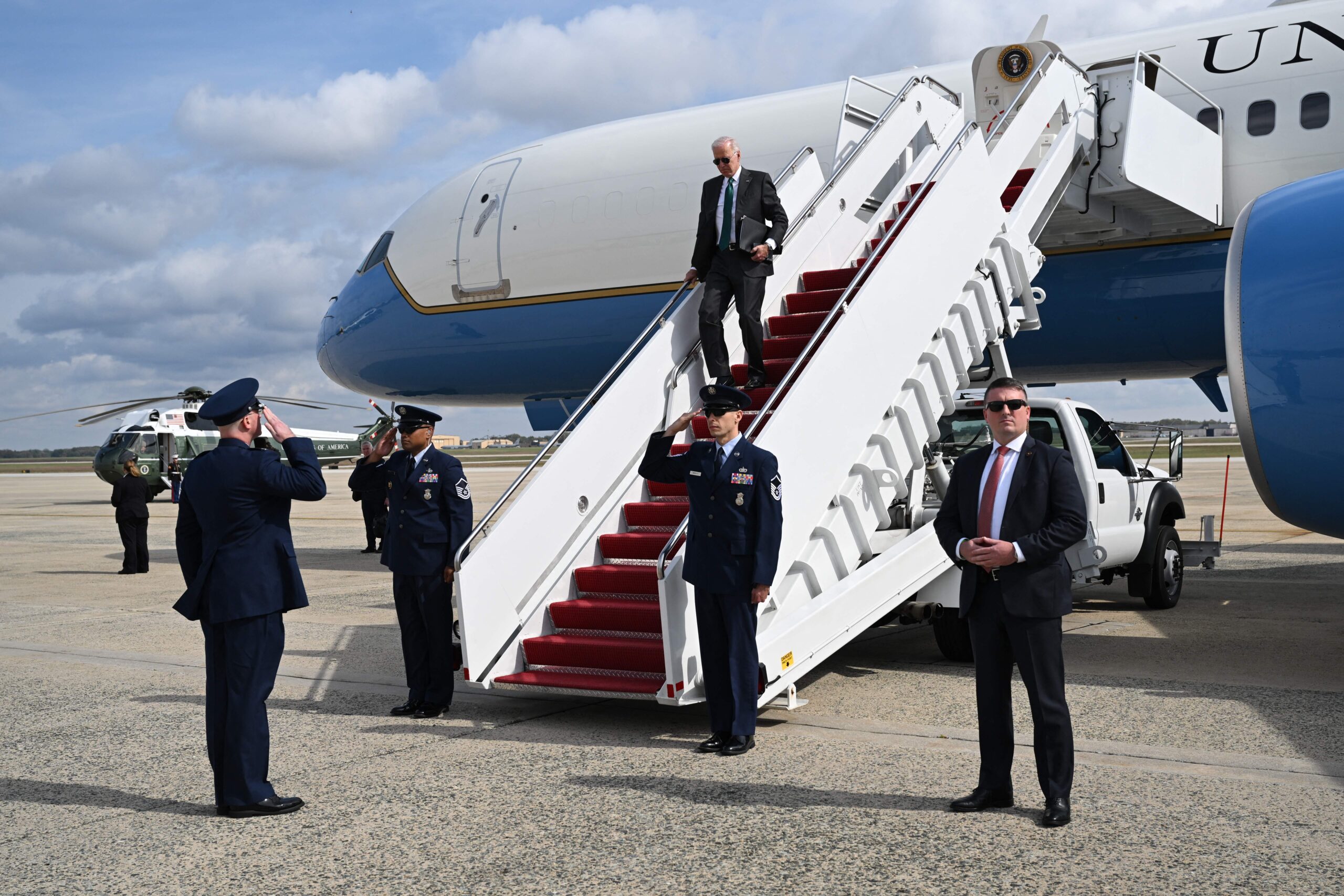Last week over southern California, U.S. Air Force F-16s raced to investigate a wayward civilian aircraft in restricted airspace in the vicinity of the president. Thanks to our friend @AircraftSpots channel, we can now get to listen to how the incident unfolded, with the radio communications between air traffic control, North American Aerospace Defense Command (NORAD), and the patrolling fighters. In the course of the intercept, one F-16 dropped flares and performed multiple aggressive maneuvers in an effort to gain the pilot’s attention, all part of the very serious business of intercepting unresponsive aircraft, a process you can watch and read more about here.
On the afternoon of October 14, President Joe Biden was making a scheduled visit to a community college in Irvine in South Orange County. As Biden began speaking to his audience at Irvine Valley College, only around 12 miles away, over Santa Ana, a pair of F-16s was intercepting a civilian Cessna 182P Skylane, registration N58960, that had ventured into airspace where high-security temporary flight restrictions (TFRs) were in place.
The F-16s were conducting the homeland air defense mission, which is generally the responsibility of NORAD and often involves fighters using NOBLE callsigns. In the audio, we can also hear references to the NORAD Western Air Defense Sector (WADS) controller — callsign BIGFOOT. TOI 1, or Track Of Interest 1, refers to the rogue Cessna.
Fighter patrols are actually a relatively standard feature of TFRs put in place due to Presidential movements, with tankers often also on hand to ensure the jets can remain on station for the duration of the restrictions. These operations can last hours or even days. It’s also not unusual for fighter units from elsewhere in the country to deploy to a particular region to help provide around-the-clock coverage for these events, which is a very resource-intensive affair. In this case, the Air Force has not confirmed which unit the F-16s were from, but we have asked for more details.

Exactly why the Cessna encroached on what was, on this occasion, some of the most highly defended airspace over the United States is unknown. Not checking notices to airmen (NOTAMs) is usually the culprit, but every case is different.
As it was, the four-seater Cessna entered the restricted airspace at 3:10 PM, just two minutes after Biden began his speech. The Skylane had previously taken off from Kingman, Arizona, where it departed at 12:31 PM Pacific Time (1:31 PM local).

The light aircraft was met by F-16 NOBLE 11 at around 5,500 feet but the presence of a fully armed Viper and multiple attempts to establish radio communications on the guard frequency was clearly not enough to get the pilot’s attention. The fighter pilot’s requests that the Cessna acknowledge the radio call and rock its wings drew no response.
At that point, the NOBLE 11 began to use other, non-verbal tactics.
In fact, the audio of the radio communications makes it clear that ten flares were expended in an effort to grab the pilot’s attention and alert them of the error, as well as their potential impending doom.
On top of that, the F-16 driver performed three ‘headbutt’ maneuvers. These typically involve flying close to the intercepted aircraft, before pulling up in front of them, sometimes in a steep climb, at a distance of around 500 feet. They can also include an approach from overhead or even crossing at an angle. But it seems all such efforts were in vain.
The communications reveal just how frustrated the pilots were with the lack of response, and also the F-16 being requested to move in closer to inspect the interior of the Cessna’s cockpit, which would confirm if the pilot, or pilots, were even still conscious.
Ultimately, the Cessna remained in restricted airspace for only around four minutes before making contact with air traffic control at Chino, California, where it landed safely at 3:24 PM. The F-16 was instructed to keep shadowing the Cessna until it was safely on the ground, at which point local law enforcement presumably took over.
According to CBS News, a Secret Service spokesperson confirmed the agency was aware of the incident and that the president’s schedule was uninterrupted.

What’s more, the Skylane wasn’t even the only civilian aircraft to violate the same restricted airspace over southern California.
In a separate incident, a Beechcraft 35 Bonanza, registration N5908S, also breached the TFRs, while en route to San Diego. Flight-tracking software shows one of the two KC-135R Stratotankers that supported the interception.
Based on the tweet below, it seems that a fighter also deployed flares as part of this interception:
These incidents, in the space of a day, show just how relatively common it is for civilian aircraft to inadvertently enter temporarily restricted airspace, especially in one of the most highly trafficked pieces of sky in the United States.
For President Biden, too, the violations of FAA-restricted airspace are not unfamiliar. In one well-publicized incident in June this year, the president and the first lady were rushed to a secure location in Rehoboth Beach, on the Delaware coast, after a private plane inadvertently flew near the Bidens’ vacation home. On that occasion, two fighter jets intercepted the aircraft, which had been tuned to the wrong radio frequency.
In September last year there was another incident, with radio communications also captured on audio, in which a U.S. Army Cessna strayed into restricted airspace around New York City, while Biden attended the annual U.N. General Assembly. F-16Cs from the 187th Fighter Wing of the Alabama Air National Guard were on temporary duty providing air patrols for that event.
The original audio of the September 21, 2021, intercept, via LiveATC.net:

Events last Friday reveal just how tense the homeland air sovereignty mission can be, even if the aircraft being intercepted eventually turns out to be entirely innocuous. With TFRs in place, the stakes are always going to be high, and with the president on the ground below, the mission becomes all the more critical. It’s no wonder, then, that special communications, rules of engagement, and intercept procedures are the order of the day. Not to forget the specially trained crews, whose work we are able to listen in on thanks to this amazingly complete air traffic control audio.
Contact the author: thomas@thedrive.com
